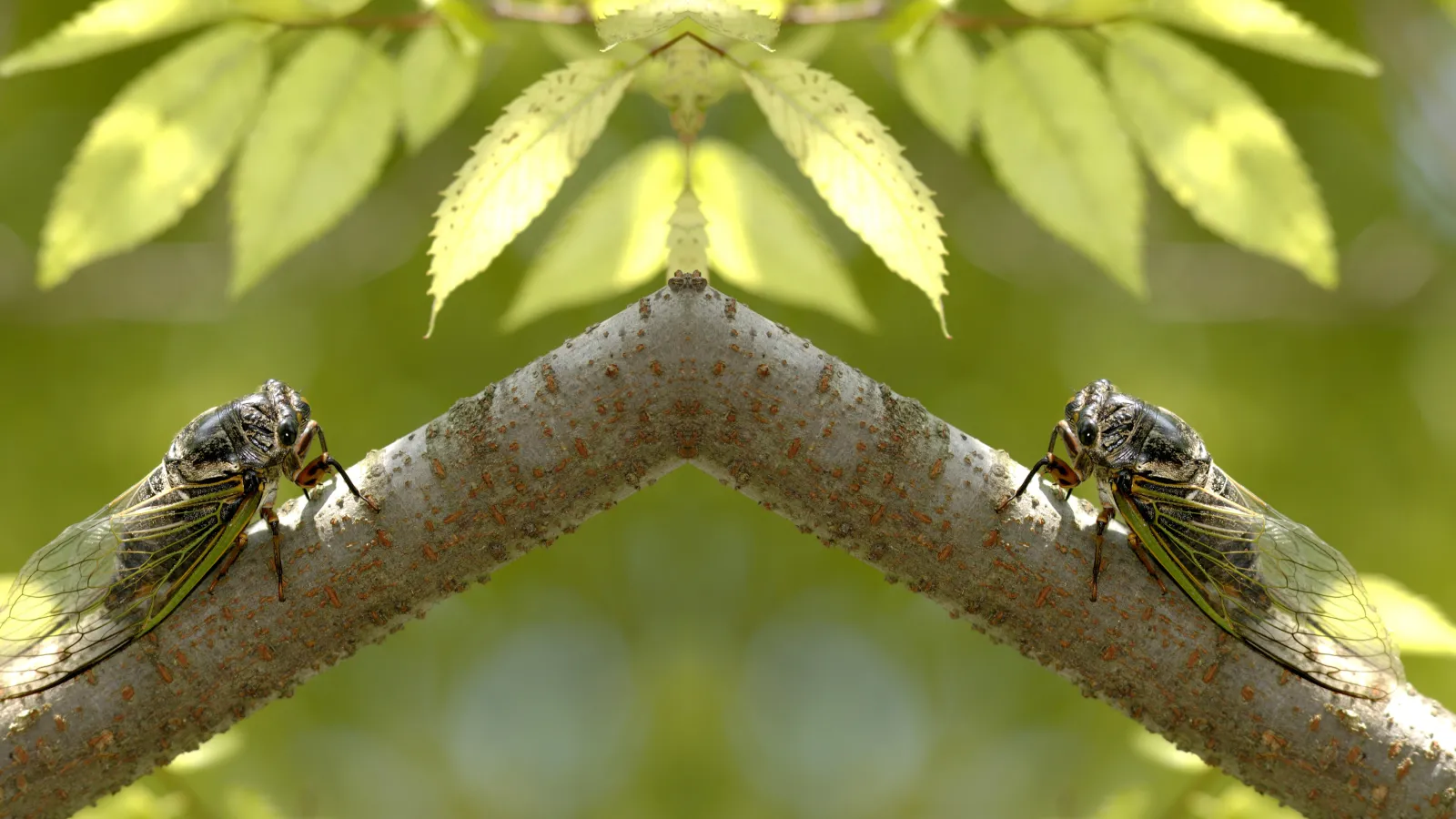
Cicadas
Latin Name: Neotibicen spp.
Cicadas are insects belonging to the order Hemiptera, suborder Auchenorrhyncha, and are easily recognizable due to their large eyes and transparent, well-veined wings. Their appearance varies by species, with colors ranging from shades of green and brown to black, sometimes featuring intricate combinations of these hues. They have robust bodies and prominent membranous wings, making them distinctive among other insects.
The life cycle of cicadas begins when adult females lay eggs in tree branches. Once hatched, the immature cicadas, known as nymphs, drop to the ground and burrow into the soil, where they feed on root juices. Depending on the species, these nymphs remain underground for several years—some for as long as 13 or 17 years—before emerging as adults. Upon surfacing, they molt, shedding their exoskeletons and transforming into their fully developed adult form. The adult stage lasts only a few weeks to a few months, during which they mate and complete their life cycle.
One of the most notable characteristics of cicadas is their sound. Male cicadas produce a loud buzzing or clicking noise, primarily to attract females. This sound is created using specialized drum-like structures called tymbals, located on the sides of their abdomen. Each species has a unique call, allowing individuals to identify their own kind and avoid cross-species mating.
Cicadas are diurnal insects, meaning they are most active during the day. They exhibit swarming behavior and feed on the xylem fluids of plants, which they extract using their specialized mouthparts. Despite their large size and sometimes intimidating presence, cicadas are harmless to humans and animals, as they do not bite or sting.
Some cicada species, known as periodical cicadas, have incredibly long life cycles of 13 or 17 years. These cicadas emerge in massive numbers, synchronizing their appearance to overwhelm predators. Found primarily in eastern North America, their synchronized emergences can result in millions or even billions of cicadas appearing at once, creating one of nature's most remarkable phenomena.
Similar pests: Cicada Killers